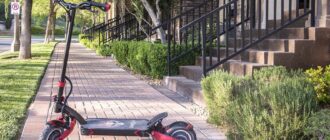Congratulations on your new electric scooter! It’s a great way to get around town, and it’s easy to operate and maintain. So, how do electric scooters work?
In this guide, we’ll explain how the electric scooter works in detail. We’ll cover everything from how to ride it to how to keep it running smoothly. So let’s get started!

Exploring the basics of an electric scooter
Electric scooters are two-wheeled, battery-powered electric commuter vehicles that you use to get around. It’s a great alternative to cars and electric bikes, and it’s an easy-to-operate and maintain motor vehicle.
But how does an electric scooter work? Let’s explore the basics of an electric scooter. When you’re using the throttle, electrical signals travel out to a control unit via cables to the throttle that instructs the battery to release electric power to some or other engines. This energy powers the scooter and makes it move forward.
It’s important to keep your electric scooter well-maintained, so it runs smoothly and lasts for years. Make sure to check the electric scooter brakes, tires, and throttle regularly.
Consider an electric bicycle if you need a scooter with a seat. Electric bicycles are faster, more comfortable, and easier to ride. A seated electric scooter cannot be folded either.

Types of motors used in an electric scooter
Most electric scooters come with a choice of either a hub engine or a belt drive motor that propels an eclectic scooter forward. An electric scooter or bike’s electric motor may define it.
Hub motors
The hub motors are the more common type, and they are located in the center of the wheel. This means hub motors are well-protected from knocks and bumps, and they are also easy to maintain.
Belt drive motors
The belt drive motor, on the other hand, is located outside of the wheel. It’s more powerful than the hub motor, but it can be more difficult to maintain and is more susceptible to damage.

How electric scooters work: understanding the electric scooter brake systems
Just like any other vehicle, electric scooters also have brake systems. How do electric scooter brakes work? This system is used to slow down or stop the electric scooter from running.
There are two types of brake systems in electric scooters – mechanical and electrical.
The mechanical brake system is the most common type of brake system found in electric scooters. It uses a brake pedal or a hand lever to activate the brake pads that rub against the spinning wheel, thus slowing it down or stopping it. This type of brake system is found in most bikes and scooters.
Electric brakes: The electric brake system, on the other hand, uses a motor to slow down or stop the e-scooter. When the rider applies the brake, it sends an electrical signal to the motor, which then creates resistance, slowing down or stopping the electric scooter. The electric brake system is usually found in more expensive and advanced electric scooter models.

Disc brake
Disc brake stops wheels with a rotor and caliper. The e-scooter disc brake has strong dry and wet braking power, making it the safest. Mearth GTS and RS Series commuter and high-performance electric scooters have disc brakes.
Cable-operated disc brakes
Most disc brakes are cable-controlled. Cables engage the caliper. Shortening the handbrake cable pinches the brake pads, stopping the rotor. Due to friction, cable-controlled disc brakes may cause resistance.
Semi-hydraulic brakes
Semi-hydraulic brakes are cable-operated. The brake lever to caliper link engages the hydraulic piston. It stops well.
Hydro-brakes
Hydraulic lines engage scooter disc brake calipers. The braking lever raises hydraulic line pressure, squeezing the rotor and piston. Its strong and consistent braking power gives it the best control over other disc brakes.
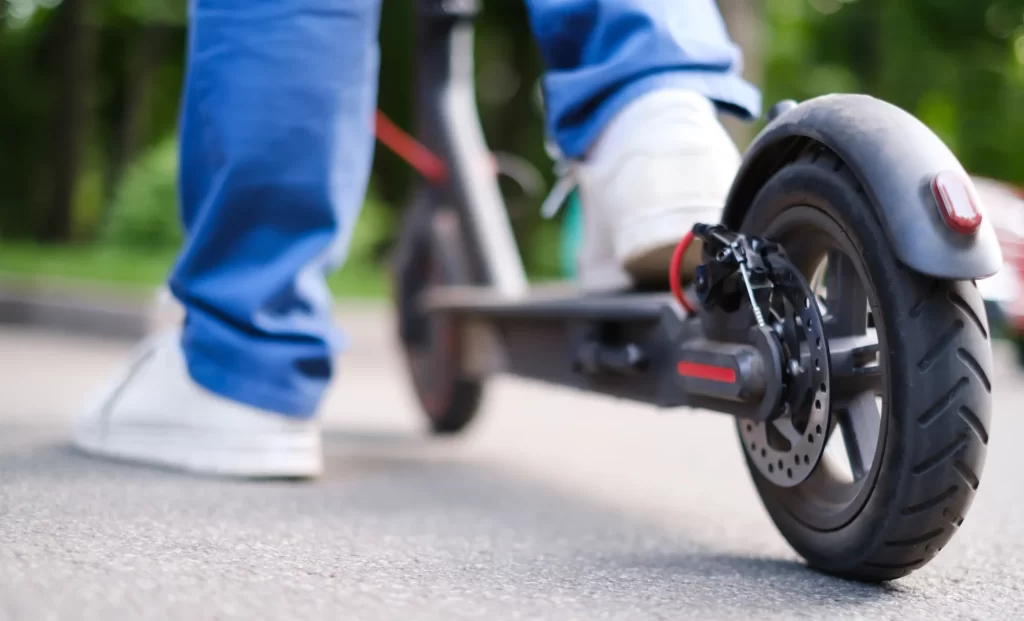
How electric scooters work: the deck and handlebars
The electric scooter deck is the section of the scooter that your feet rest on while riding. On some electric scooters, this may be a flat area, and on others, it could have a grip surface for extra traction.
Any controls (e.g., throttle, brakes) are usually mounted to the handlebars, which are connected to the deck through a stem. The handlebars are also connected to the front wheel, enabling you to turn and make tight maneuvers when needed.
The electric scooter handlebars may have grips for your hands to ensure comfort for longer rides and secure handling in tight corners and sharp turns.
They can also be raised or lowered according to your height preferences. Some electric scooters have displays on them that indicate your speed and battery while you ride.
How electric scooters work: features of a modern electric scooter
The modern quality electric scooter comes with a variety of amazing features that offer riders convenience and safety. For example, some scooters come with front, rear, and side lighting to help you see and be seen as you ride along.
They also have wheel locks to secure the scooter from theft and folding mechanisms for easy storage when not in use. Some electric scooters also feature regenerative braking systems that allow the rider to slow down their vehicle without having to use the brake pedal.
Instead, the rider simply needs to release their throttle, and the kinetic energy generated by the wheels is used to charge the battery. This can help extend your battery life and make your rides last longer.
These modern features make riding an e-scooter an enjoyable and reliable experience in any weather condition.

How electric scooters work: common maintenance requirements
Electric scooters are generally low-maintenance vehicles. However, there are some important maintenance requirements you should be aware of, so your ride will always be safe and reliable.
The most common maintenance tasks involve the battery and the electrical system. Checking the battery charge and topping off the charge regularly will ensure your scooter’s power source maintains its full strength for years to come.
You should also occasionally check the wiring, cables, and connectors for signs of corrosion or other damage. Doing so will help keep your scooter’s electrical system running smoothly and prevent any unwanted surprises out on the road.
In addition to these basic guidelines, it’s a good idea to lubricate all moving parts with a silicone-based lubricant periodically if they become dry or squeaky. This will help keep them functioning at their optimal level of performance.
Above all else, make sure to read through your manual thoroughly, so you can stay on top of any other specific maintenance requirements your electric scooter may have.
Rechargeable batteries and motors
At the power plant of an e-scooter, you’ll find rechargeable batteries and motors. Batteries are charged with a battery charger and are equipped with several cells that can be recharged and discharged several times.
The chemical reactions within the cells will produce electric current to supply the voltage.
The motor is responsible for converting electric energy into mechanical energy.
When an electric current is supplied to the motor, it starts to rotate and drives your scooter. Depending on the type of scooter, it will come with different types of motors such as a brushless DC motor, hub motor, or even a combustion engine.
Furthermore, depending on the type of scooter, some models can have more than one motor to provide sufficient power for performance or safety.
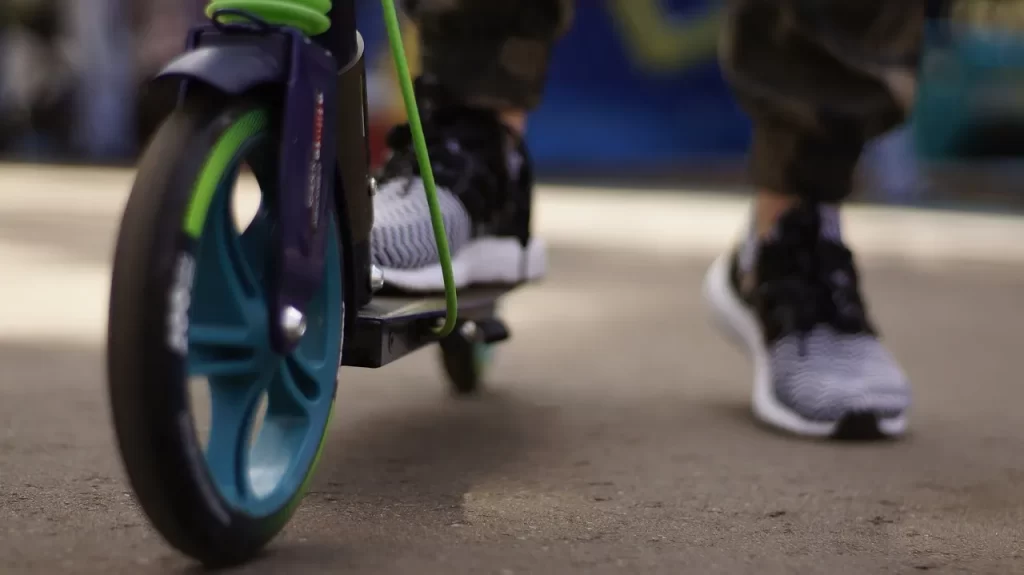
Brushless DC motors, suspension systems
There are several types of electric motors, but the brushless DC motor is important for our purposes. The Brushless DC motor is used to generate the power necessary to propel an electric scooter forward.
Brushless DC motors are a more recent technology that outperforms brushed DC motors. Brushed DC motors have an efficiency of 75-80%, whereas brushless motors have an efficiency of 85-90%.
These motors need no maintenance and they provide a silent ride. They typically range from 24V-48V and are electronically limited to certain speeds.
The suspension systems on many electric scooters vary depending on the model, but generally include a coil-spring type system in the front and/or rear wheel.
This helps with maneuverability and handling, as well as overall comfort when riding an electric scooter. Some models may also include a hydraulic shock absorber in the rear for additional vibration dampening.
Lithium-ion batteries
Now that you understand the basics of “how does an electric scooter work?”, let’s go into a bit more detail on the battery itself. Most electric scooters use lithium-ion batteries.
The lithium-ion battery is lightweight, high-power, and rechargeable, lasting almost three times longer than other battery technologies such as lead-acid or nickel-metal hydride.
The fact that lithium-ion battery is rechargeable means that you won’t need to buy new batteries for your scooter every time – just plug it in to charge up!
The lithium-ion battery also generally has better cold-weather performance than some other battery technologies, which is an important factor to consider when you’re trying to get around in cold weather.
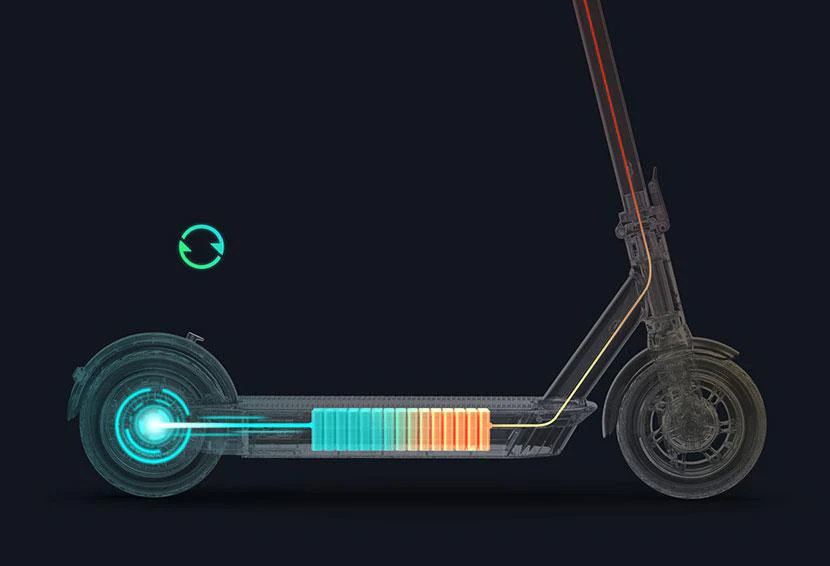
The throttle and control unit
When you’re using the throttle, electrical signals travel out to the control unit via wires connected to the throttle. These signals inform the battery to release electric energy to either one or both engines.
From here, power is transmitted from the engine/s to the drivetrain, which ultimately powers the electric scooter’s wheels.
The control unit also acts as a governor and moderates the voltage supplied by the batteries to ensure that it is consistent and doesn’t exceed its designated limit – so you don’t have to worry about your scooter spinning out of control!
The control unit also includes additional features such as cruise control and acceleration limits for added safety and convenience.
Maintenance tips for electric scooters
There are some maintenance tips that you should follow when riding an e-scooter. For example, you should regularly check your brakes, lights, and tires to make sure they are in good condition.
The battery should be charged regularly, and the connections should be secure. If needed, use a silicone-based lubricant on the chain to reduce friction while riding.
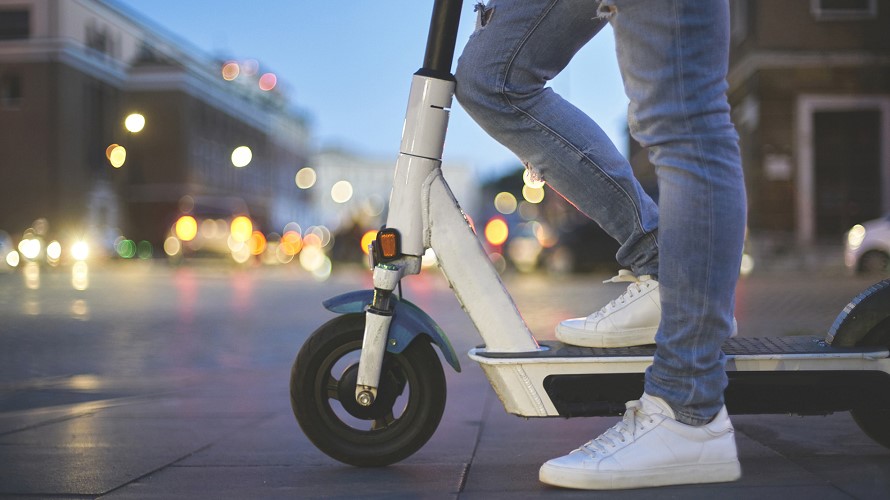
Setting up the electric scooter
First, let’s take a look at the basics—the e-scooter itself. It’s important to read the manual carefully and familiarize yourself with the scooter before you try to ride it. The manual will explain how to set up the scooter, and it’s important to follow these instructions closely.
In general, setting up the scooter is pretty simple. You’ll need to attach the seat and the handlebars and make sure that the battery is fully charged. Once you’ve done that, you’re ready to go!
Riding an electric scooter safely and comfortably
Now that you know how the electric scooter operates, it’s time to learn how to ride it safely and comfortably.
Here are a few tips:
- Always wear a helmet. A good helmet can save your life in the event of an accident.
- Stay aware of your surroundings at all times. Be especially careful when riding near cars or other obstacles.
- Use both hands to control the scooter. This will help you stay stable and avoid accidents.
- Don’t ride on wet or icy surfaces. It’s significant to be aware of weather conditions before you ride and to take appropriate precautions.
- Keep a safe distance from other vehicles and pedestrians. Again, it’s important to stay aware of your surroundings and be prudent when riding in populated areas.
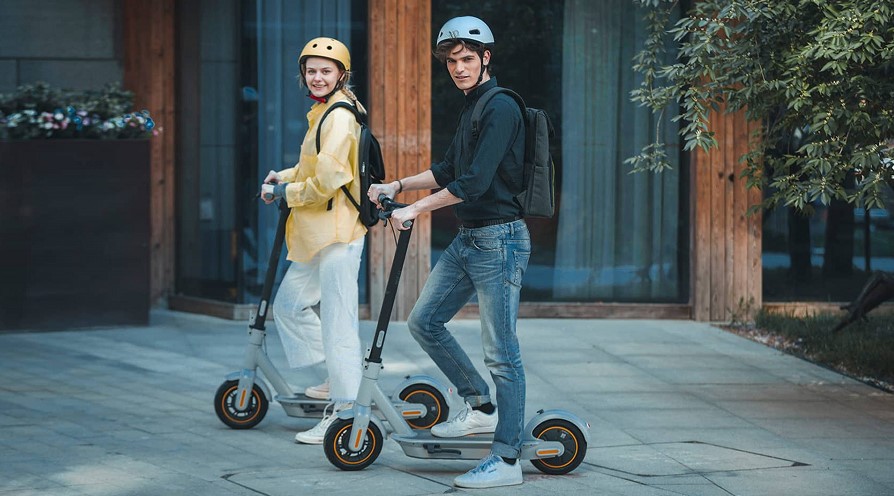
Maintenance and troubleshooting tips for electric scooters
One of the most essential things to do is to keep the battery healthy. Make sure to keep it charged and avoid letting it run down too low. You should also avoid leaving it in extreme temperatures, both hot and cold.
If you’re having trouble starting your scooter, there are a few things you can try. First, check the ignition switch to make sure it’s in the on position. If that doesn’t work, try charging the battery for a few hours and then try again. If it still doesn’t work, you may need to have the battery replaced.
Finally, here are a few general tips for keeping your electric scooter in good condition:
- To maintain good brakes, lights, and tires, check them regularly.
- Charge the battery regularly and secure the connections.
- Keep an eye on the charge level, so you know when to recharge
Understanding the brake lever, speed controller, and solid wheels on an electric scooter
When you’re riding an electric scooter, it’s significant to familiarize yourself with the controls. On the left handlebar of your scooter, you’ll find two levers.
The front lever is the brake lever and the back lever is the accelerator, which lets you control the speed of your scooter.
The speed controller on your electric scooter allows you to fine-tune your speed from 0-12.5 mph. The solid rubber construction ensures a smooth ride, no matter what type of terrain you are riding on.
The battery stores energy and transfers it to power up the motor so that you can move forward.
Rear foot brake on an electric scooter
On the right side of your scooter, there’s a foot brake. This is helpful when you need to slow down quickly or come to a complete stop. The more gently you apply pressure on your brakes, the slower and smoother your stops will be. Practice braking until it becomes second nature.
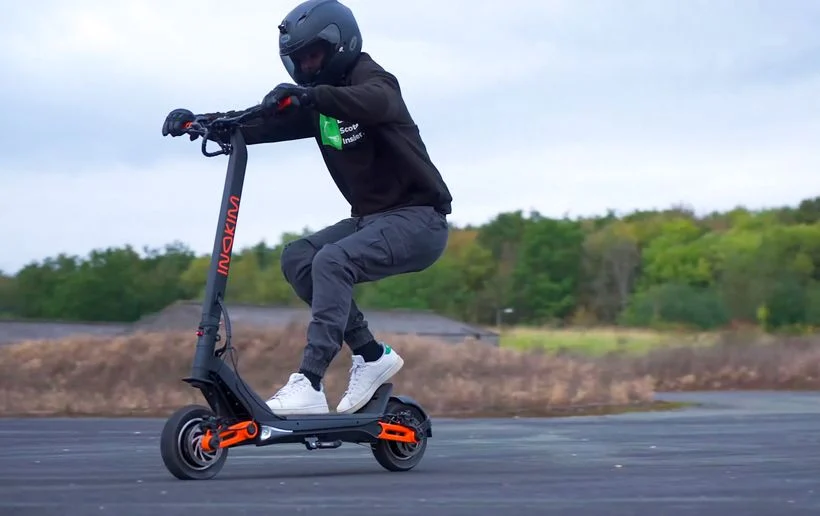
Types of electric scooters
The two most common are stand-up scooters and sit-down scooters. They offer the most freedom of movement and don’t require extra seats or accessories. Some even come with additional features like headlights, tail lights, and brakes.
Energy storage capacity of electric scooters
Electric scooters have a battery that stores the energy used to power their motor. The capacity of the battery determines how far and fast you can go on an electric scooter. Batteries typically last for 1000-2000 charges and can last up to 5 years if taken properly care of.
Regenerative braking on electric scooters
Another great feature of electric scooters is the regenerative brake. This means that when you brake, the kinetic energy generated is converted into electricity and used to recharge the battery. As a bonus, this also makes for quieter braking with less friction, resulting in a smoother ride overall.
Steering and folding mechanism
The folding mechanism allows you to fold your scooter up in a few simple steps.
The steering mechanism is usually connected to the handlebars, which have a throttle.
Most electric scooters have a latch on one side of the frame that allows access to the folding mechanism.
The hydraulic braking system on electric scooters
A hydraulic braking system uses oil pressure to activate the brakes, so it’s more powerful than traditional cable brakes. The oil pressure is generated by the rider’s body weight and speed as they are riding. All you need to do is push down on the handlebars and the brakes will engage.
Older scooter models
Older scooters are powered by an internal combustion engine instead of an electric motor. You’ll need fuel to run the scooter, and you’ll need to regularly check and replace the spark plugs. Older models also don’t come with a throttle, so you will need to use your body weight to accelerate and slow down.
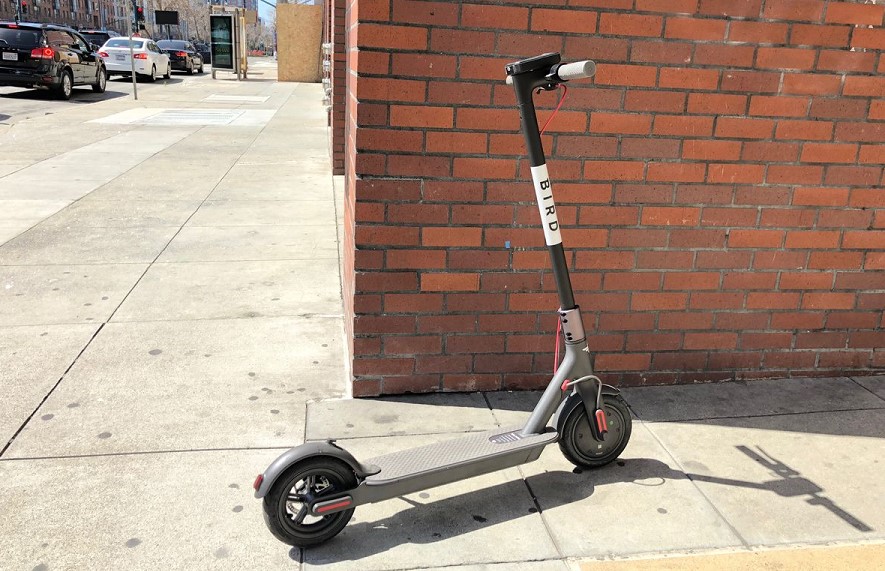
Conclusion
Electric scooters are a great way to get around town without having to deal with traffic. They’re easy to operate and maintain, and they’re a lot of fun to ride.
This guide provides a detailed explanation of how electric scooters work and gives you a better understanding of how these vehicles function.
FAQs
How does electric scooter charge?
Plug the charger into your electric scooter and attach it. Depending on the scooter, charging takes two to three hours. It may take four hours if you have a longer-lasting electric scooter.
Do electric scooters run out of battery?
Depending on storage, use, and capacity, electric scooter batteries last 2–4 years and 3000–5000 miles. Use and storage reduce scooter battery life.
How long does an electric scooter last on a full charge?
About 35–40 miles. A fully charged electric scooter can travel 35-40 miles. That depends on many factors.
How do street electric scooters get charged?
Charger into a socket. Charger lights should turn green when on. Plug the scooter’s charger in. Charging scooters should indicate.
How does an electric scooter throttle work?
Electric scooter throttles are engaged while riding. The throttle tells the speed regulator and battery to give the motor more power to accelerate. Manage your throttle to maximize range and power on your e-scooter.
Also Read About Reasons Why Lime & Bird Electric Scooters Are Dangerous





